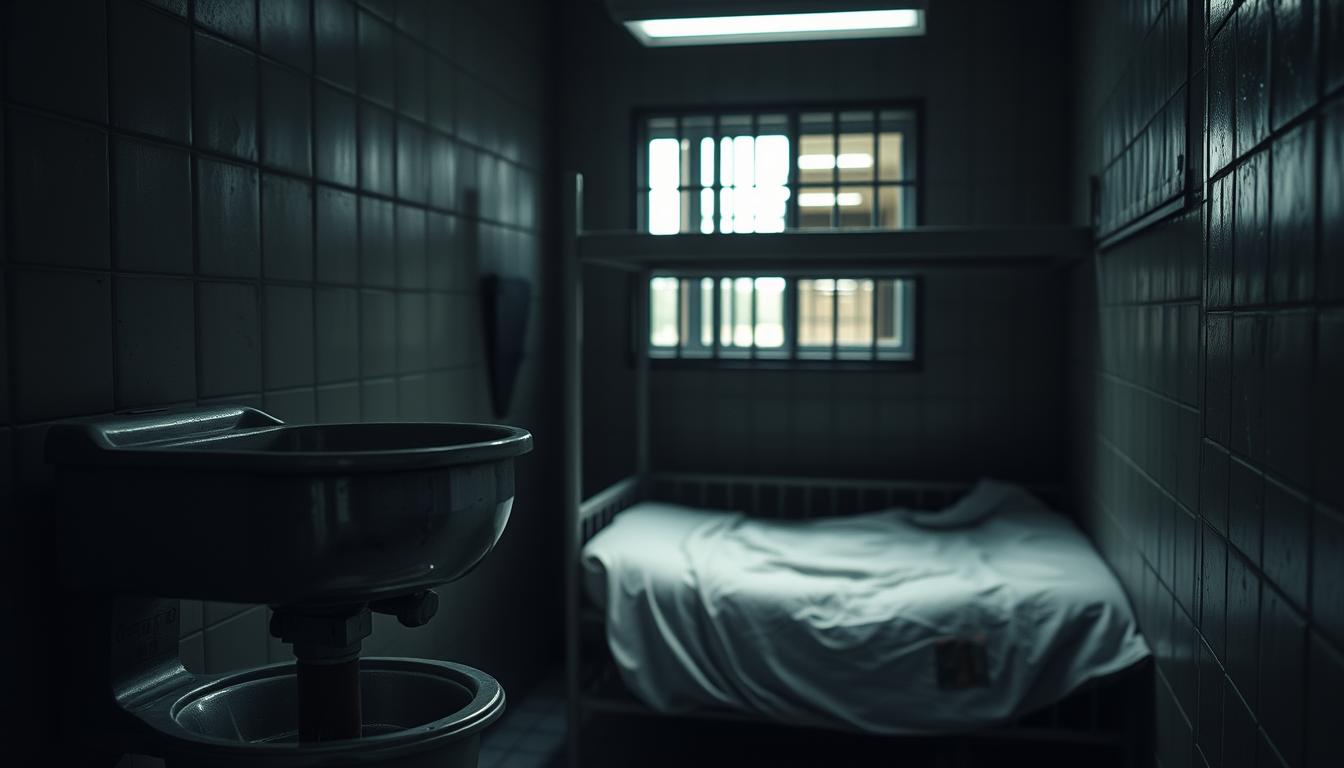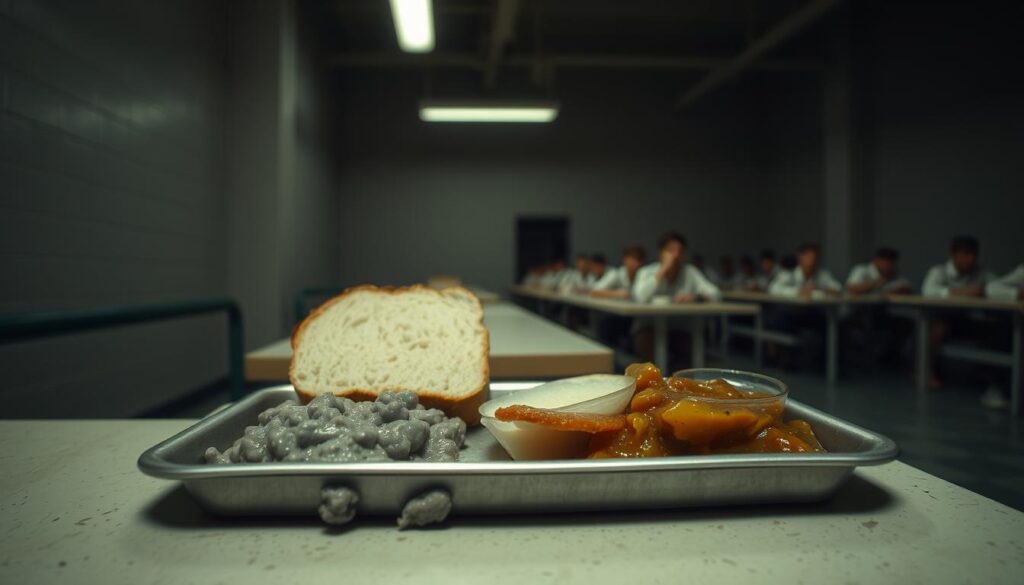
21 Jul What to Expect in Jail: Hygiene and Health Realities
Overcrowding, outdated facilities, and underfunded healthcare systems often lead to unsanitary living conditions. Inmates may be forced to share limited access to toilets, showers, and clean bedding. This lack of hygiene can quickly contribute to the spread of skin infections, respiratory illnesses, and other communicable diseases like tuberculosis or COVID-19.
Medical care, when available, is frequently delayed or insufficient. Many inmates with chronic conditions — such as diabetes, asthma, or mental health disorders — don’t receive regular treatment, and emergency situations may go ignored or underreported. For women, the lack of adequate prenatal care, menstrual hygiene products, and gender-specific medical attention creates further risks.
The consequences of poor jail hygiene and substandard healthcare aren’t limited to those behind bars. Inmates often return to their communities carrying untreated health issues, which can strain public health systems and contribute to broader community spread of disease. In short, failing to uphold basic health standards in jails doesn’t just harm inmates — it affects everyone.
With many people sharing cells and common areas, keeping things clean is critical to stop diseases. But, the reality inside can be far from what’s expected. This is a big reason why our team at Armstrong Bail Bonds strives to keep people out of jail and with their loved ones. We understand the conditions of jail, on top of everything else that comes with it.
Understanding the Jail Environment: A Primer on Incarceration Conditions
Looking into the jail’s structure and daily life is key. It’s not just about the physical space, but the conditions that directly impact inmate health. While detention centers are meant to keep people safe and support rehabilitation, many fall short of the health standards tied to basic human rights.
Jails house both short- and long-term inmates, which makes sanitation and healthcare essential. Inmates should have access to proper hygiene, emergency care, and treatment for chronic conditions—just like people outside. But in reality, overcrowding, poor ventilation, and limited access to clean water, showers, and exercise can worsen both physical and mental health.
Chronic illnesses like asthma, diabetes, and mental health disorders often go untreated due to staff shortages and lack of resources. Emergency care may be delayed, and basic needs like nutritious food and clean bedding are not always met. These issues don’t just affect inmates—they impact public health when individuals return to their communities.
Improving jail conditions isn’t just a matter of comfort—it’s a matter of dignity, health, and justice.
Initial Health Screening and Continuity of Care
The first health check for detainees is critical. It ensures facilities comply with prison health regulations and allows medical staff to identify existing conditions like diabetes, infections, mental health disorders, or substance withdrawal risks. Early detection is key—it helps prevent emergencies, ensures continuity of care, and protects the health of other inmates and staff.
However, maintaining consistent healthcare throughout a person’s time in jail is much more difficult. Jails often face challenges like limited medical personnel, overburdened staff, and a lack of access to up-to-date medical records. Inmates may be transferred frequently between facilities, disrupting treatment plans or medication schedules.
Logistical issues—such as delays in transporting inmates to hospitals, understaffed clinics within the jail, or poor communication between jail staff and healthcare providers—can cause serious gaps in care. This not only puts detainees at risk but can also lead to worsening health conditions that are more costly and harder to treat later.
Effective jail healthcare requires more than an initial screening—it demands ongoing support, adequate resources, and a system designed to treat people with dignity and consistency.
Challenges in Continuity of Care for Incarcerated Individuals
Keeping care going for inmates is more than just the first check. Ongoing treatment is often disrupted by transfers between facilities, where medical histories may not follow the inmate. Without complete records, new staff may be unaware of chronic conditions, past treatments, or urgent health needs—leading to delays, incorrect care, or missed medications.
Access to specialists is also limited. Many jails rely on outside providers for dental, mental health, or chronic disease management, which can result in long wait times or canceled appointments. Inmates with complex medical needs may go weeks—or longer—without the care they would regularly receive on the outside.
Follow-up care is another major gap. Even when health issues are identified, many facilities struggle to schedule and monitor ongoing treatments due to staff shortages or poor coordination. This lack of continuity can allow minor issues to worsen, increasing both suffering and long-term healthcare costs.
Improving these services helps everyone. It’s not just about the inmates. For more info, check out the Grubin health assessment and its findings.
Jail Hygiene and Health
- Systematic cleaning schedules to uphold cell cleanliness standards
- Regular health inspections and audits to boost prison sanitation practices
- Training programs for staff on jail hygiene and health
- Engagement of inmates in inmate hygiene management education
Inmate Healthcare Services: Access and Quality
Incarcerated individual wellness depends a lot on the quality and access to healthcare in detention centers. The inmate healthcare guidelines aim to make sure medical and mental health services are as efficient as those in the community.
Physical healthcare in these centers follows strict rules to meet inmates’ various medical needs. But, problems with infrastructure and resources can make these services less effective. Many facilities struggle with outdated equipment, limited medical staff, and overcrowding, which can delay treatment or reduce the quality of care.
These challenges can turn manageable conditions into serious health risks. Without timely intervention, issues like infections, injuries, or chronic illnesses may worsen—impacting not only inmates but also the overall safety and functionality of the facility. Addressing these gaps requires targeted investment, staff training, and a commitment to healthcare as a core part of incarceration standards.
Mental health services are also extremely important. They need to handle the complex psychological problems inmates face. Inmates have rights to mental health care, including the right to a hearing before being moved to a mental health facility. This shows how important it is for detention centers to offer these services.

| Healthcare Area | Challenges | Improvements Needed |
|---|---|---|
| Physical Health | Inconsistent care, Lack of specialized services | Enhanced training for medical staff, Better diagnostic tools |
| Mental Health | Insufficient mental health professionals, Stigma | More professionals, Improved mental health training |
Mental and Emotional Well-being in Jail
| Program Type | Description | Expected Benefit |
|---|---|---|
| Therapeutic Sessions | One-on-one and group sessions conducted by trained psychologists. | Reduction in symptoms of depression and anxiety. |
| Physical Activity | Regular exercise programs including yoga and resistance training. | Improvement in overall physical health and mental stamina. |
| Peer Support Groups | Organized groups providing a platform for sharing experiences and coping strategies. | Enhanced peer relationships and support networks. |
| Educational Programs | Opportunities to acquire new skills or continue education. | Increased self-esteem and reduction in idle time. |
Dental and Optometric Care Behind Bars
Keeping inmates healthy is a core responsibility of correctional facilities, and that includes providing access to dental and optometric care. These services are essential for overall health, yet they often face obstacles such as limited staffing, outdated equipment, and long wait times. As a result, many inmates go without basic treatments, leading to worsening conditions that could have been prevented.
Cleanliness plays a major role in the success of these health services. Unsanitary environments increase the risk of infection and can undermine dental and eye care efforts. If exam areas, tools, or shared spaces aren’t properly cleaned, it becomes difficult to maintain safe and effective treatment.
Investing in proper dental and vision care doesn’t just improve quality of life—it also reduces long-term healthcare costs by catching and treating problems early. Preventative care is far more cost-effective than emergency treatment, and it helps ensure inmates are treated with the dignity they deserve.
Let’s take a closer look at how these services function and why they’re critical to inmate health and rehabilitation.
Availability of Dental Services for Inmates
- Regular dental check-ups and emergency care
- Treatment for chronic conditions and preventive care
- Impact of facility cleanliness on dental health outcomes
Eye Care Services in the Correctional System
- Screening for vision problems and corrective measures
- Access to specialist optometric care in jail settings
- Strategies for improving optometric services in tough conditions
Dentists in Washington DC say that to improve dental services for inmates in jail, we need more money and a better plan. By doing this, we can make life better for inmates and help the whole healthcare system. Quite a few inmates require same day crowns upon reentry into regular life.
Improving these services isn’t just about short-term care—it’s about long-term public health. When inmates receive proper dental and vision treatment during incarceration, they’re more likely to reenter society with fewer health burdens and a better chance at successful rehabilitation.
Hygiene Practices and Access to Sanitation Supplies
Keeping jails clean is key for the health of both inmates and staff. Proper sanitation prevents the spread of disease, reduces infections, and promotes a safer living environment. Basic hygiene protocols—like cleaning cells regularly, sanitizing shared spaces, and providing access to soap and disinfectant—are essential. However, consistent access to these supplies is often limited, making it difficult to maintain even the most basic standards.
While most jails have written policies for cleaning schedules and approved sanitation materials, how well these are followed can vary widely. Some facilities have adequate funding and prioritize cleanliness, while others struggle due to budget constraints, staff shortages, or overcrowding. In such cases, routine cleaning may be skipped, and inmates may have to rely on shared, unsanitary supplies—or go without entirely.
When cleaning standards are neglected, the risk of disease outbreaks rises. Skin infections, respiratory illnesses, and viruses like COVID-19 or norovirus can spread quickly in close quarters. A lack of cleanliness also contributes to poor mental health, increasing feelings of neglect and hopelessness among those incarcerated.
Maintaining proper hygiene in correctional facilities isn’t optional—it’s a public health responsibility that directly impacts the safety of everyone inside and, ultimately, the broader community.
Standard Jail Hygiene Protocols
Every inmate should receive basic hygiene items like soap, toothpaste, and access to clean water. These essentials aren’t just about comfort—they’re critical for preventing disease and maintaining personal dignity. Jails have a responsibility to supply and restock these items regularly, especially in crowded environments where illness can spread quickly.
Routine checks and proper distribution ensure that sanitation standards are met and that no inmate is left without the tools to care for themselves. Consistent access to hygiene is a simple but powerful way to support health, reduce outbreaks, and uphold humane conditions inside correctional facilities.
Challenges with Sanitation and Personal Hygiene
Even with established rules, many jails struggle to provide enough cleaning and hygiene supplies. Overcrowding puts a strain on already limited resources, and older facilities often lack the infrastructure to support proper sanitation. Budget constraints only make the problem worse, leaving staff with too few tools to meet health standards.
When basic supplies like disinfectants, soap, or toilet paper run low, it becomes nearly impossible to maintain cleanliness. This creates unsafe conditions that increase the risk of illness and make life harder for both inmates and staff. Addressing these challenges requires more than policies—it demands funding, oversight, and a real commitment to public health inside correctional walls.
| Issue | Impact |
|---|---|
| Insufficient Supplies | Limited access to personal hygiene products leading to possible health risks. |
| Overcrowding | Increases the risk of disease transmission and makes it hard to keep hygiene standards. |
| Budget Constraints | Inconsistencies in the availability of necessary hygiene supplies and facility upkeep. |
It’s hard to manage sanitation well in jails. But, by solving these problems, jails can get better. This makes everyone’s life safer and more dignified.
Nutrition and Diet in Jail: Meeting Health Standards
The role of nutrition in jail is vital. It directly impacts both the physical and mental health of inmates. Nutritious meals help manage chronic conditions like diabetes and high blood pressure, while also supporting emotional stability and cognitive function.
Proper meal planning in detention centers ensures that dietary needs and restrictions—such as allergies, religious diets, or medical conditions—are respected. When meals lack balance or variety, it can lead to deficiencies, weight-related issues, and worsen existing health problems.
Providing consistent, nutritious food is more than a legal obligation—it’s a foundation for humane treatment and overall inmate wellness. Investing in better nutrition helps reduce medical costs and supports a healthier correctional environment.
Meal Planning and Dietary Restrictions
Effective meal planning in jails must meet various inmate needs. This includes religious sensitivities, health issues, and personal choices. Institutions aim to provide meals that are nutritious and consider dietary restrictions for individual health. A detailed approach is essential, as outlined in the latest guidelines. You can find more information through this Department of Correction food service primer.
Impact of Jail Diets on Inmate Health
Poor nutrition can seriously harm an inmate’s health. Diets lacking in essential nutrients can worsen chronic conditions like diabetes, heart disease, and gastrointestinal issues, while also weakening the immune system and increasing vulnerability to infections.
Nutrition also plays a major role in mental health. Inadequate or unbalanced meals can contribute to mood swings, irritability, depression, and cognitive decline—issues already common in high-stress correctional environments.
To address these concerns, correctional facilities must align meal planning with recognized health and dietary standards. This means offering balanced portions, accommodating medical and religious needs, and minimizing processed, low-nutrient foods. Prioritizing proper nutrition is a practical and humane way to support both physical and mental wellness behind bars.

| Meal Component | Standard Provision | Enhanced Provision |
|---|---|---|
| Caloric Intake | 2000-2500 Calories | 2500-3000 Calories (Based on labor intensity) |
| Protein | 50 grams | 70 grams |
| Fruits and Vegetables | 5 servings | 5+ servings |
| Dairy Products | 3 servings | 3+ servings |
| Whole Grains | 6 servings | 8 servings |
Following these improved standards is important. It’s not just about following rules—it’s about treating inmates with dignity and supporting their long-term well-being. Nutrition plays a key role in this effort. Balanced meals can help manage chronic conditions, boost immunity, and improve mental health.
When inmates receive adequate nutrition, they’re more likely to stay physically healthy and emotionally stable, reducing medical emergencies and behavioral issues. Unfortunately, many jails serve highly processed, low-nutrient meals that can worsen health over time.
Prioritizing better food quality isn’t just humane—it’s practical. Healthier inmates mean fewer medical costs, safer facilities, and a greater chance of successful reintegration after release.
Exercise and Recreational Activities for Incarcerated Individuals
It’s key to understand the importance of exercise in detention and recreational activities for inmate health. Physical activities help keep people fit and improve their mental health. They also help reduce stress and feelings of isolation caused by being locked up.
Regular exercise offers both physical and emotional benefits. Movement can improve cardiovascular health, boost immune function, and help manage chronic conditions like high blood pressure or diabetes—conditions that are common among incarcerated populations. Just as importantly, physical activity releases endorphins, which can help combat depression, anxiety, and the mental strain that often comes with confinement.
Recreational programs like sports, group workouts, or outdoor yard time give inmates a sense of routine, purpose, and personal agency. These activities break the monotony of incarceration and provide opportunities for social interaction, which can reduce behavioral issues and create a more positive jail environment overall.
Unfortunately, access to exercise and recreation isn’t always consistent. Overcrowding, staffing shortages, or strict lockdowns can limit or eliminate inmates’ access to these programs for extended periods. When physical activity is restricted, the effects on mental and physical health can be severe—leading to increased agitation, worsening health, and a greater risk of long-term harm.
Promoting regular, structured exercise and recreation in detention facilities is not a luxury—it’s a proven tool for supporting inmate well-being, safety, and rehabilitation.
Conclusion
The conversation around jail hygiene and health is essential. It reminds us that incarceration shouldn’t mean a loss of dignity, safety, or access to basic care. This article has outlined the many factors that impact inmate well-being—from the physical structure of jails to the critical need for reliable medical, mental, and dental care.
Creating and enforcing effective health policies within detention centers is not a luxury—it’s a responsibility. These policies must ensure continuity of care, access to clean environments, and support for both physical and emotional wellness. When these systems are in place, we not only protect the rights of those in custody, but also reduce long-term public health risks and lower the chance of recidivism.
Improving inmate health is about smart, compassionate strategies that benefit individuals and the broader community. Healthy inmates are more likely to reenter society successfully, and a healthier jail system creates a safer, more humane environment for staff and detainees alike.
Changing how we approach incarceration may be a large task, but it starts with small, consistent efforts to put health and humanity at the center. At Armstrong Bail Bonds, we believe in that mission. By helping individuals post bail quickly and reunite with their families, we support the first step in recovery and reintegration.
Addressing these challenges head-on can reshape how healthcare is delivered in jails—and pave the way for a more just, responsible future for all.
FAQ

